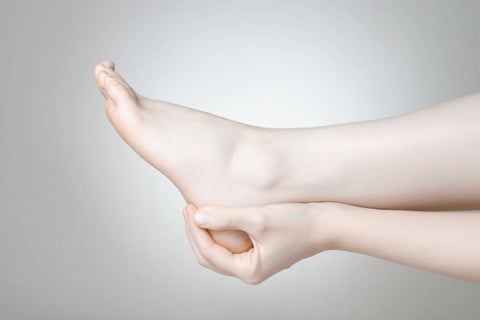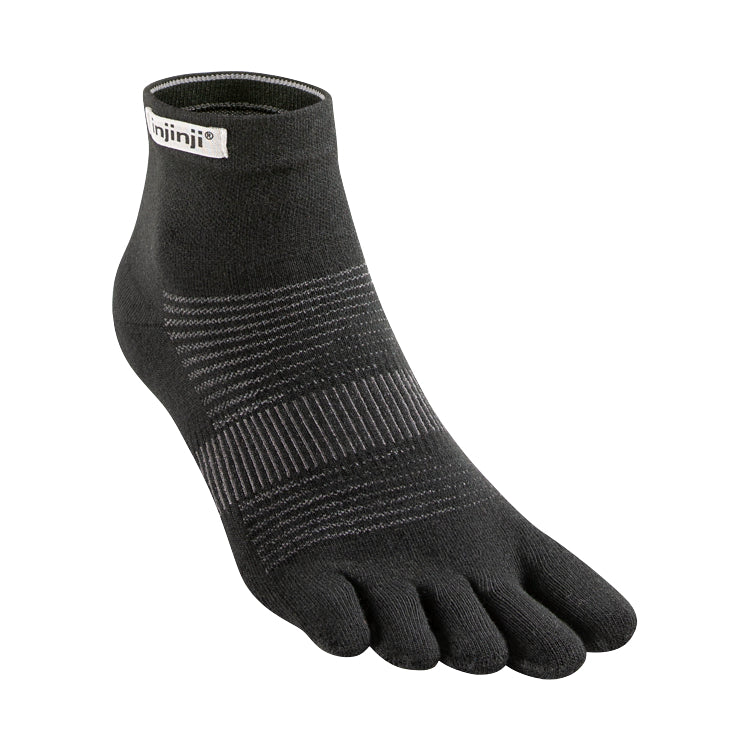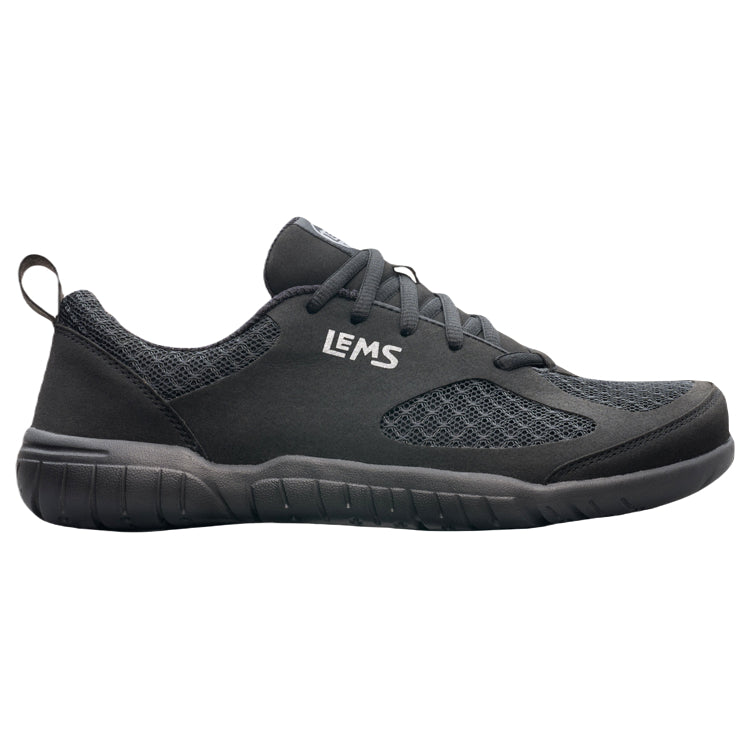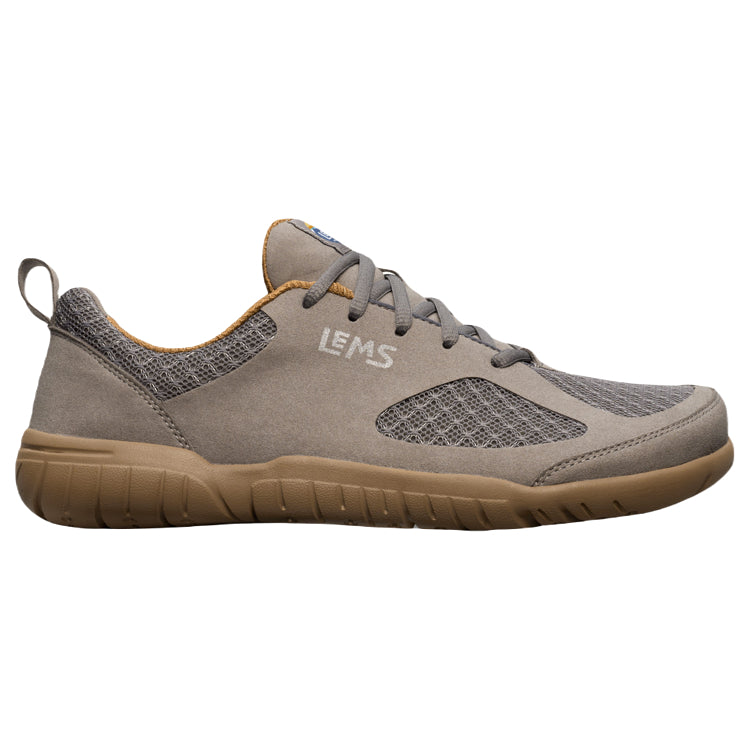
Definition
Plantar Fasciosis: Pain in the heel, typically due to compromised blood flow to and from the foot's plantar fascia and a corresponding buildup of metabolic byproducts.
General Info
Plantar fasciosis is a foot condition characterized by heel pain and pain in the plantar fascia—the strong and dense connective tissue structure on the sole of the foot that spans the foot arch. This condition has historically been called plantar fasciitis because it was believed that plantar fascia inflammation was the principal underlying cause. Plantar fasciosis is a more accurate name for this condition because it actually involves tissue degeneration of the plantar fascia—microtears and cell death—not inflammation.
The plantar fascia helps the bones of the foot absorb gait-related shock. It also holds the toes firmly on the ground as the body passes over the foot. Plantar fasciosis most commonly causes pain or discomfort at the point where the plantar fascia attaches to the calcaneus, or heel bone. Active men between the ages of 40 and 70 are most commonly affected by this health problem.
Plantar fasciosis, sometimes known as calcaneal spur syndrome or calcaneal enthesopathy, can involve stretching, tearing, and degeneration of the plantar fascia at its attachment site. In some cases, heel pain at this attachment site may be caused by other health problems, including certain types of arthritis. A physician may run several tests to help determine the true cause of the plantar fascia pain and the most effective treatment methods to resolve the complaint.
Signs & Symptoms
Heel pain is the most common symptom associated with plantar fasciosis. The heel pain may be most severe in the morning (with the first steps after getting out of bed) or with walking after prolonged periods of sitting or standing. Pain is most common under the heel bone, but the pain may also be felt in the foot arch or on the outside aspect of the foot.
Some of the other most common signs and symptoms associated with plantar fasciosis include:
- Impaired ability to walk
- Tenderness on the bottom of the heel
- Mild swelling and redness in the affected area
Possible Causes
Inappropriate footwear is the No. 1 cause of plantar fasciosis. Shoes that have toe spring and a tapering toe box hold the big toe in an adducted and extended position. In this position, the abductor hallucis muscle—the muscle responsible for moving the big toe away from the foot’s midline—pulls on a foot structure called the flexor retinaculum, which in turn may restrict blood flow through the posterior tibial artery—the vessel that carries blood to the bottom of the foot. Tissues in the sole of the foot fed by this artery begin to degenerate as the bloodflow decreases.
Other possible causes of or contributors to this health problem include:
- Obesity
- Reactive arthritis
- Psoriatic arthritis
- Rheumatoid arthritis
- Calf muscle shortening
- Corticosteroid injections
- Plantar fascia contracture
Helpful Strategies
Shoe therapy—finding and wearing men’s and women’s shoes that allow the feet to be in their natural position—is one of the most helpful strategies in treating or preventing plantar fasciosis. Shoes that possess a flat heel, are widest at the ends of the toes, lack toe spring, and have flexible soles are most appropriate for this foot problem. An increasing number of shoe companies are producing shoes with these design characteristics, but shoes that include all these features are still difficult to find. Most conventional footwear can be modified by stretching the shoe’s upper, bending out the toe spring, removing the shoe’s liner, and cutting the shoe at certain key points to allow more room for the foot.
Correct Toes is another powerful foot health tool for addressing plantar fasciosis. Correct Toes addresses the root cause of plantar fasciosis by properly aligning the big toe and reducing the tension created by the abductor hallucis longus on the blood vessels that feed and “cleanse” the tissues of the plantar fascia. The plantar fasciosis-related pain will diminish over time as the dead tissue is washed away.
A rehabilitation program for the foot, which includes targeted stretches and other exercises, may be helpful in treating plantar fasciosis too. Key exercises for this purpose include the Toe Extensor Stretch, the Big Toe Stretch, and the Ball Rolling Exercise (for the latter, we find the Naboso Neuro Ball to be particularly helpful and effective). Dietary changes and aerobic exercise are particularly important for overweight individuals who have plantar fasciosis. Water aerobics may be most appropriate for a person whose pain does not allow him or her to walk or cycle. Physical therapy may be another helpful treatment modality for this problem, and includes therapies such as ultrasound, electrical stimulation, contrast baths, and range-of-motion exercises. Massage, acupuncture, reflexology, and magnet therapy are other holistic approaches that may be helpful.

WANT TO IMPROVE YOUR FOOT HEALTH?
Let the team at Natural Footgear help you! Subscribe to our newsletter for the latest offers and helpful info, and sign up for our FREE email courses on various topics and foot health conditions.
Sign Up →
Want to Improve Your Foot Health?
We are here to help you every step of the way. Get our newsletter for the latest offers and helpful info, and sign up for our FREE email courses on various topics and conditions, including bunions, hammertoes, neuromas, plantar fasciosis, shin splints, ingrown toenails, and more.
Sign Up →
 In this video, Dr. Ray McClanahan, a sports podiatrist at Northwest Foot and Ankle and the inventor of Correct Toes, discusses the condition commonly referred to as plantar fasciitis and explains why this foot health problem should more appropriately be called plantar fasciosis. Dr. Ray also discusses how this condition is treated using conventional versus natural approaches. Learn all about plantar fasciosis, including what you can do about it, in this helpful and...
Read more
In this video, Dr. Ray McClanahan, a sports podiatrist at Northwest Foot and Ankle and the inventor of Correct Toes, discusses the condition commonly referred to as plantar fasciitis and explains why this foot health problem should more appropriately be called plantar fasciosis. Dr. Ray also discusses how this condition is treated using conventional versus natural approaches. Learn all about plantar fasciosis, including what you can do about it, in this helpful and...
Read more












This is a very interesting article! Since plantar fasciosis is a circulatory problem, does this mean that just by improving your blood flow in your feet, the dead tissues can be flushed out of your system and therefore PF resolved? Also, I was wondering if taping has an influence on blood circulation? Thank you for your response.
Hi, R,
Thank you for your comment. Improving circulation is an integral first step in treating plantar fasciosis. Footwear that allows the feet to act like a bare foot inside the shoe can be very helpful in cleansing the dead tissue from the plantar fascia, as can the use of Correct Toes. Therapeutic taping may indeed be helpful in enhancing circulation in some cases, depending on the condition being treated and the taping technique applied. You may want to consider checking out the following article on plantar fasciosis. It has a variety of information regarding this condition, including information about natural approaches to care and prevention:
www.naturalfootgear.com/blogs/education/17889104-plantar-fasciosis
If you have further questions or concerns, feel free to contact us at info@naturalfootgear.com. We’re happy to help however we can!
Kind Regards,
Marty Hughes, DC
Thank you for your response! I also saw on one of your videos that applying Sombra cream on your feet enhances blood circulation. I had several sessions of ESWT with Sonocur and I am not supposed to take any NSAIDs nor massage with ice. Could you please let me know if sombra could interfere with the treatment I had? Thank you again. This is a great website, very informative and helpful!
Hi, R,
Thank you for your comment. This is definitely a question for the healthcare practitioner who performed the modalities you mentioned. He or she will be able to give you much more detailed info about appropriate post-treatment home-care techniques.
Kind regards,
Marty Hughes, DC
I read through all the recommended stretches and there is no mention of the typical calf stretches for PF that are so widely recommended elsewhere. I’ve been battling PF for many months now and have been doing the “common stretches” ad nauseum with no relief. I’m wondering if I’m doing more harm than good and am curious as to your and Dr. Ray’s thoughts and recommendations? Thank you!
Greetings, Don,
Thank you for your message and question. Your question is a really excellent one. You’re absolutely correct that we do not recommend some of the commonly-prescribed stretches for plantar fasciosis, especially stretches that force the toes into an extended position.
Plantar fasciosis is a circulatory problem, not an inflammatory problem as is so commonly believed. Placing the toes in extension during a stretch actually exacerbates the circulatory problem and does not solve the underlying issue. All of this is explained quite eloquently by Dr. Ray McClanahan in this video, which I think you will find very helpful:
www.naturalfootgear.com/blogs/education/17889116-plantar-fasciosis-conventional-vs-natural-approaches
Please do let us know if you have any additional questions!
Kind regards,
Marty Hughes, DC
Heat or ice for plantar fasciosis? Thank you.
Hi, Bonnie,
Great question! I recommend that you check out this resource from our site for the answer:
www.naturalfootgear.com/blogs/educational-articles/heat-or-ice-for-plantar-fasciosis
If you have any additional questions, please do send them our way!
Kind regards,
Marty Hughes, DC